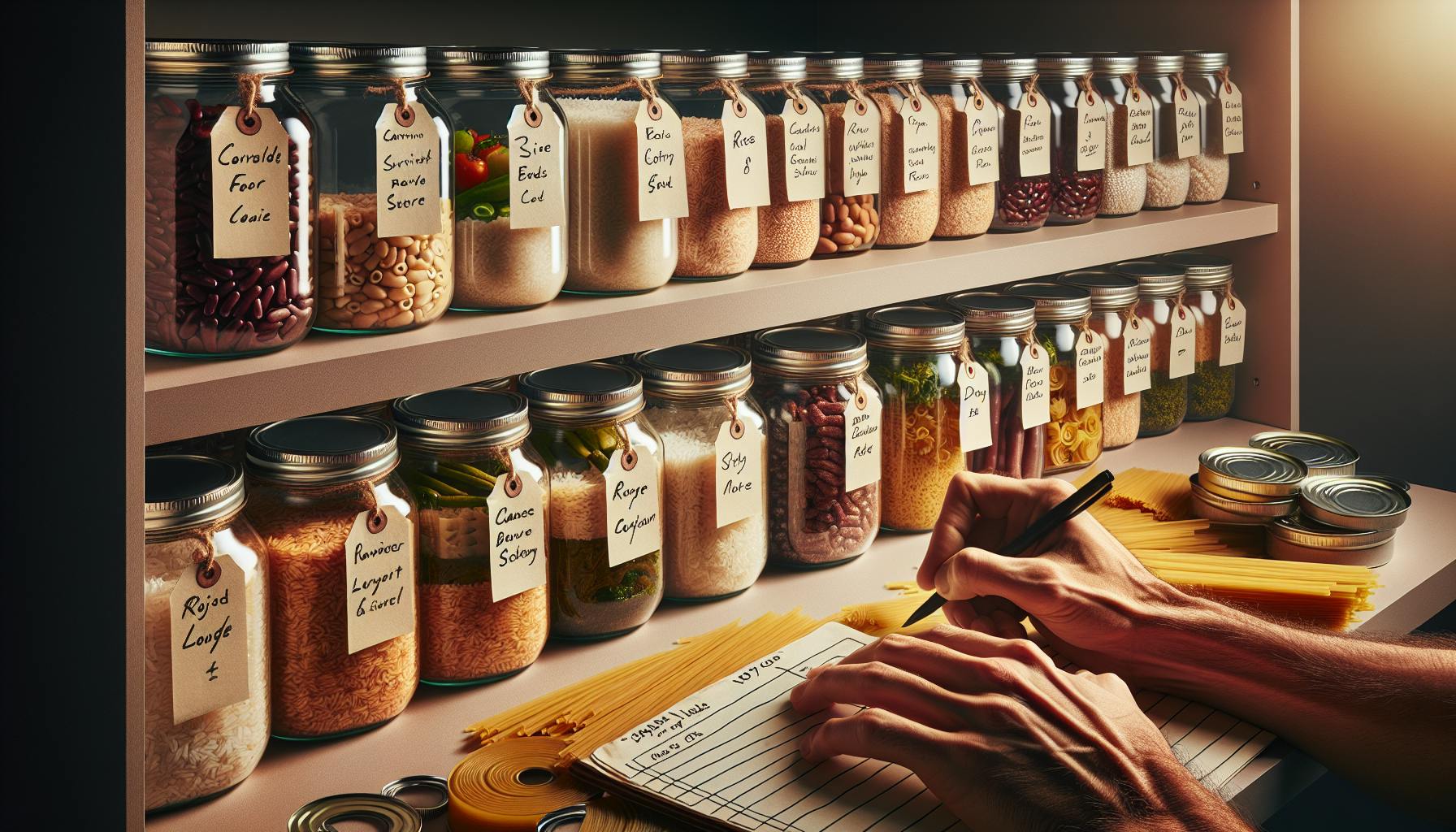Finding a reliable survival bag can be challenging with so many options to consider.
This article reviews top-rated survival bags for sale based on essential features, quality, and customizability to help you select the ideal bug out backpack.
We'll cover popular picks like the 5.11 Rush72 and Direct Action Ghost backpacks, compare military-grade vs civilian bags, provide tips on packing your survival kit, and outline key factors in choosing your perfect survival bag.
Introduction to Survival Bags and Backpacks
Survival bags, also known as bug out bags, are essential for emergency preparedness. These backpacks are stocked with gear to help you survive for at least 72 hours if a disaster or emergency situation arises.
Understanding the Importance of a Reliable Bug Out Bag
A bug out bag contains food, water, first aid supplies, tools, and other gear to sustain you in an emergency when you may need to evacuate quickly. Building a well-stocked survival bag is crucial for the following reasons:
- Allows you to leave quickly without packing essentials
- Provides necessities if utilities/services are disrupted
- Critical if you need to travel by foot to safety
- Can sustain life for days until help arrives
Make sure to customize your bag based on possible risks in your region, your skills/needs, and evacuation plan.
Essential Features in a Survival Backpack
When selecting a bug out bag, key features include:
-
Storage Capacity: Choose a backpack large enough to hold 3+ days of gear and supplies. 25-40L capacity is ideal.
-
Durability: Opt for abrasion-resistant fabrics that can withstand the elements. MOLLE webbing helps attach extra pouches.
-
Portability: Seek a lightweight yet rugged pack for extended carry. Padded straps and hip belt improve comfort.
-
Organization: Bags with ample pockets and dividers keep gear secure yet accessible in an emergency.
-
Water Resistance: Waterproof fabrics protect contents from rain, spills, etc. Some have built-in rain covers.
Carefully compare survival backpack options to find one matching your budget, intended use, and disaster preparedness needs.
What is the best size survival bag?
When it comes to survival bags, bigger is not always better. Here are some key size considerations:
-
Aim for 25-35 liters. This provides enough room for basic survival gear without being too bulky or heavy. We recommend against going over 65 liters unless you have backpacking experience carrying heavy loads.
-
Prioritize essentials first. Focus on packing water, food, first aid, shelter, navigation, and other critical items before adding "nice-to-have" gear. Getting all your essentials into a smaller, lighter bag is better than overstuffing a huge backpack.
-
Test the weight. Once packed, try carrying your bag for an extended hike. You want to remain mobile in a survival situation, so make sure the weight and bulk are manageable for your fitness level.
-
Consider modular or detachable components. Some survival bags allow you to remove compartments or tie on additional gear externally. This helps scale the bag up or down as needed.
The bottom line is that in an emergency, mobility and ease of transport are key. Resist the temptation to buy an oversized survival rucksack. A well-designed 25-35 liter bag with smartly chosen contents is often your best bet for making it through tough situations.
How to get free emergency kit?
The Federal Emergency Management Agency (FEMA) offers a free Emergency Financial First Aid Kit to help individuals and families prepare financially for emergencies.
To get the free emergency kit:
- Go to the FEMA website.
- Click the green "Download the Emergency Financial First Aid Kit" button.
- The kit will download as a PDF document that you can save and print.
The emergency financial kit covers topics like:
- Gathering financial documentation
- Evaluating insurance coverage
- Tracking expenses and cash flow
- Identifying recovery resources
Having an emergency financial plan is an important part of overall preparedness. This free kit from FEMA gives you a framework to build financial resilience for when disasters strike.
Integrating emergency planning into your regular finances takes time. But starting with a simple step like downloading this kit can set you on the path towards greater peace of mind.
What should be inside a survival bag?
A well-stocked survival bag is crucial for emergency preparedness. Here are some of the most essential items to include:
Water
- 3 bottles of water or a water filtration system. Having access to clean drinking water is vital in a crisis situation.
Food
- Pack high-calorie, non-perishable foods like protein bars, dried fruits and nuts. Enough to last 3 days.
Shelter and Warmth
- Emergency blanket, hand warmers, and rain poncho provide protection from the elements.
First Aid
- First aid kit with bandages, ointments, scissors, etc. Also pack 3 days worth of critical medications plus copies of prescriptions. Medical gloves also important.
The exact contents can be customized based on factors like climate, health needs, and likelihood of certain risks. But having the basics covered will help you safely endure a crisis event or evacuation. Choose durable, purpose-built survival bags for securely transporting these vital items.
What are 10 items in a survival kit?
Having the right items in your survival kit can mean the difference between life and death in an emergency situation. Here are 10 must-have items to include:
-
Flashlight - A flashlight allows you to see in the dark and signal for help. Be sure to pack extra batteries.
-
Whistle - A loud whistle can alert rescuers to your location.
-
Dust mask - Protects your lungs from dust, ash, and debris.
-
Maps - Local maps help you navigate the area if you become lost or disoriented.
-
Manual can opener - Allows you to open canned food when electric can openers are unavailable.
-
Radio - Receive emergency broadcasts and weather reports. Crank or battery-powered models are best.
-
Games/books/puzzles - Keep children occupied during stressful times.
-
First aid kit - Treat injuries until medical care can be reached. Include bandages, gauze, ointments, etc.
-
Multi-tool - Performs various functions like opening cans or cutting things.
-
Water/food - Small supplies to stabilize you until help arrives. Energy bars, pouches of tuna, and bottled water are good options.
Having these 10 items in your survival bag provides basic necessities to improve chances of enduring an emergency situation. Be sure to customize your kit based on your unique needs and possible risks in your region. Check and refresh items regularly.
sbb-itb-b932644
Top Survival Backpacks on the Market
We review highly-rated survival backpacks across different price points, use cases, and feature sets to help you find the best option for your needs.
5.11 Rush72 Tactical Survival Kit Backpack
The 5.11 Rush72 is a top pick for a rugged, high-capacity survival backpack equipped to handle outdoor adventures. Key features include:
- Durable 1050D nylon construction
- 55 liters of storage space
- MOLLE webbing for attaching additional pouches and gear
- Hydration bladder pocket
- Dual side compression straps for cinching down the load
- PALS webbing on front, sides, and bottom to expand carrying capacity
With its cavernous interior and heavy-duty materials, the 5.11 Rush72 is ready to haul a full complement of survival supplies on the go.
Direct Action Ghost Tactical Bug Out Backpack
Featuring laser-cut MOLLE webbing and water-resistant 500D cordura fabric, the Direct Action Ghost offers versatile storage in a lightweight 30 liter bag. Notables specs:
- Fully MOLLE compatible for adding pouches and gear
- Laptop/tablet sleeve
- Hidden rifle/fishing rod compartment
- Hydration bladder compatible
- Padded shoulder straps and back panel
If you want a nimble EDC backpack capable of transforming into a bug out bag, the Ghost Tactical is a compelling choice.
REEBOW GEAR Military Survival Backpack
With MOLLE compatibility and durable construction, the REEBOW GEAR backpack provides ample space for survival essentials at a budget-friendly price point. Useful features include:
- 600D polyester material resists wear and tear
- Detachable pouches for organizing gear
- Chest and waist straps help stabilize heavy loads
- Large main compartment with drawstring closure
- Multiple colors available
For affordability and versatility, the REEBOW GEAR Military Backpack is a great option for preppers seeking robust storage on a budget.
Military-Grade Bug Out Bags for Sale
Military-grade bug out bags are designed for extreme durability and specialized functionality to meet the demands of high-risk survival scenarios. These bags provide robust construction combined with tactical features optimized for rapid deployment in emergency situations.
Durability and Design of Military Survival Kits
Military survival kits and bug out bags are constructed to withstand rugged use in the harshest conditions. Key durability features include:
- Durable, abrasion-resistant nylon or cordura shell materials
- Reinforced stitching at stress points
- Waterproof fabric coatings and seam sealing
- Rugged zippers designed for frequent access
- Attachment points for modular add-ons and accessories
The organized designs allow rapid access to gear, with features like:
- Multiple external pockets for segmentation of supplies
- Straps, loops, and molle webbing for easy accessibility
- Clear internal pouches for visibility of contents
- Compartments built around survival essentials
Best Military Bug Out Bags for Tactical Readiness
Top military bug out bags provide an optimal balance of durability, organization, storage space, and mobility. Recommended options include:
- 5.11 Rush72 Backpack - A high-capacity 72-hour bag with waterproof fabric and 55 compartments.
- Direct Action Ghost Tactical Backpack - A lightweight, low-profile bag optimized for rapid access.
- Spec Ops T.H.E. Pack - An organized, modular bag designed for customizable storage.
- Triple Aught Design FAST Pack Litespeed - An ultra-lightweight bag for maximum mobility.
These bags allow efficient access to gear with organization focused around mission-critical survival necessities.
Comparing Civilian and Military Bug Out Bag Supplies
Key differences in gear between civilian and military bug out bags include:
- Self Defense - Military bags emphasize tactical defense items like body armor, helmets, and weaponry. Civilian bags focus more on stealth and evasion.
- Comms - Military bags integrate communications equipment like radios and encryption devices for command and control.
- Medical - Military bags expect delayed medical support, so emphasize trauma care. Civilian bags have more general first aid.
- Identification - Military bags require uniform and ID items. Civilian bags aim to maintain anonymity.
Choose civilian bags for wilderness survival or urban disasters. Pick military bags for high-risk operational environments where combat readiness takes priority.
Building the Ultimate Survival Kit Bug Out Bag
When building the ultimate survival kit bug out bag, it's important to prioritize durability, utility, and practicality. The bag needs to withstand the elements while carrying 3+ days worth of essential gear to survive an emergency scenario.
Essential Components of a Bugout Bag Survival Kit
The key components of a well-stocked bugout bag include:
- Water and water purification supplies
- Non-perishable, high-calorie food rations
- First aid kit
- Light sources like flashlights, glow sticks, etc.
- Fire starting materials like matches, lighters, tinder
- Shelter supplies like emergency blankets, tarps, rope
- Navigation tools like map, compass, GPS device
- Self-defense items like knife, pepper spray, whistle
- Hygiene and sanitation products
- Extra clothing and footwear
- Communication devices like radio, cell phone, chargers
- Cash, copies of identification documents
When choosing a survival backpack, make sure it has enough capacity to carry at least 3 days worth of these critical supplies while still being a comfortable weight to transport by foot over long distances. Compartmentalized and specialized pockets help keep things organized.
Material and Craftsmanship in the Best Survival Kit Backpack
The best bug out bag backpacks are made of durable, water-resistant nylon fabric with reinforced stitching at stress points. Materials like 1000D nylon or cordura stand up well to rugged use in emergency scenarios. Look for bags with YKK zippers, side and front load compression straps, padded shoulder straps, and attachment points for extra gear. Military-grade bags meet exacting specifications for resilience.
Organizational Systems for Bugout Gear
The top bugout backpacks have specialized compartments, sleeves, and pockets to store different categories of gear. For example, external pockets provide quick access to items you may need to grab regularly like maps, flashlights, or a rain poncho. Interior sections keep clothing, food, medical supplies organized. Some bags even have hydration bladder sleeves to easily drink water hands-free. Structured segmentation allows efficient access to exactly what you need precisely when you need it during a stressful bugout situation.
Personalizing Your Bugout Backpack
We explore options for tailoring your survival bag to your needs with modular components, additional gear, and personal touches.
Selecting Modular Attachments for Bugout Bag Supplies
MOLLE panels, straps, clips and Velcro allow you to accessorize your bag with survival tools like shovels, tents, and gas masks. Consider your specific needs and environment when choosing modular attachments. For example, attach a folding shovel if you may need to dig a shelter, or add straps to carry a tent if you expect to be on the move.
Key Supplies for a Comprehensive Bugout Bag
Be sure to pack water, food, first aid, tools, fire starters, lighting, navigation aids, hygiene items, shelter, power, clothing and self-defense tools. Prioritize lightweight, non-perishable, multi-use items. For example, pack high-calorie protein bars over canned goods, a metal water bottle and water purification tablets over bottled water, and a multi-tool instead of several separate tools.
Incorporating Personal Essentials into Your Bugout Gear
Consider including irreplaceable personal items like family photos, documents, medications, pet supplies, and comfort items. Store these thoughtfully to maximize space without compromising their condition. For example, vacuum seal photos and documents, use compact travel containers for medications, and opt for single-serve pet food packets over large bags.
Conclusion: Selecting and Equipping Your Ideal Survival Bag
Choosing the right survival bag that meets your needs and budget is key for emergency preparedness. Here are some tips when selecting and equipping your bug out bag:
-
Determine your budget. Survival bags can range greatly in price from under $50 to over $300. Set a budget that works for you.
-
Consider bag size. The size of your bug out bag depends on your situation. If traveling by foot, keep it under 30lbs. For vehicle transport, 50-75lbs may work.
-
Prioritize essentials first. Stock your bag with absolute necessities like water, food, first aid, shelter. Then add supplemental items.
-
Customize for your situation. Tailor your bag to likely emergency scenarios based on your region, season, terrain. Urban vs wilderness packs differ.
-
Organize effectively. Use pouches, compartments, and packing methods that allow quick access to gear. Place most vital items on top.
-
Field test and refine. Take your packed bug out bag on hikes or weekend trips. Learn what works and improve your packing strategy.
Choose a survival bag that fits within your budget but doesn't compromise durability or capacity. Pack mindfully, organize purposefully, and refine based on experience. With an equipped go-bag, you can better handle emergencies.


